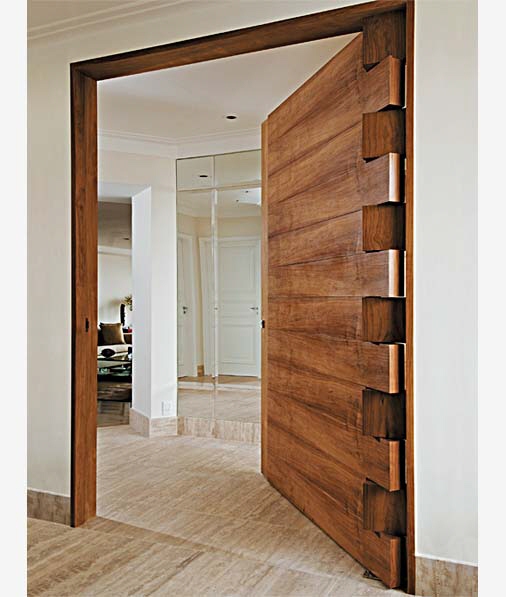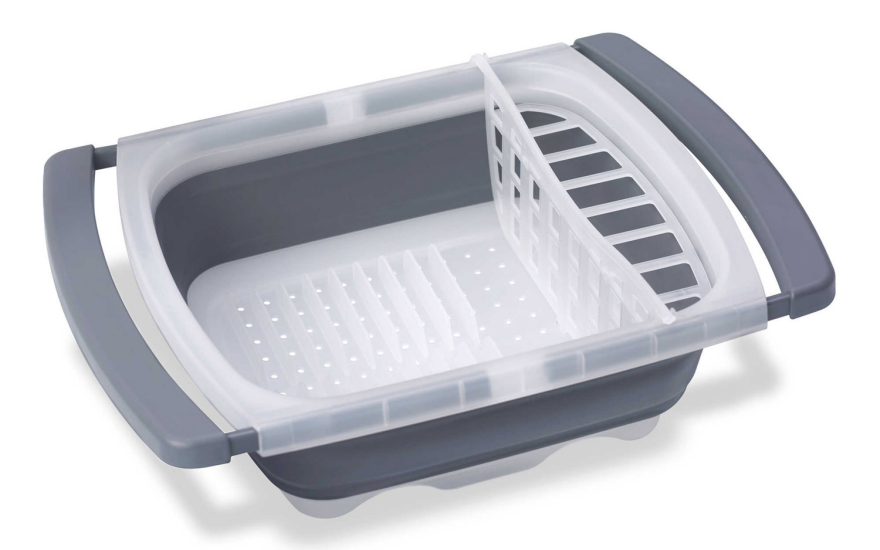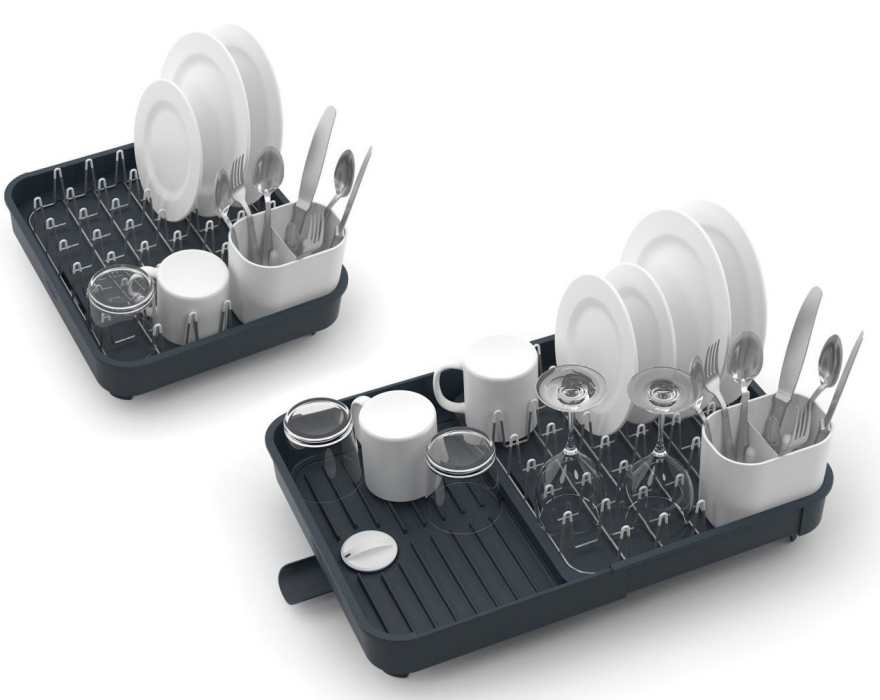The new Silver Dawn is a re-think by Rolls Royce, reaching toward a new slice of the market (hopefully younger) to those who had considered a Phantom convertible but weren't ready to take on that much car. The idea of a smaller Rolls Royce convertible as compared to the huge Phantom is a good one. The Phantom convertible (which the Brits call a "drophead coupe") is fine as a luxury conveyance but even with four people on board the car is so big that people look tiny—lost in the splendor of it all. The car is daunting. It is almost embarrassing to drive a car that large. The Silver Dawn, on the other hand, is smaller and lighter and represents a car aimed at a different age range with more sporting potential considering its size.
![]()
Last month at Monterey Car Week, I had an opportunity to preview a pre-production prototype of the new Silver Dawn in a small garage at Pebble Beach. The car is not all new. It is based on the existing hardtop coupe but Rolls says 80% of the body panels are new—not straight off the coupe model.
Below is a preview of the new Silver Dawn and thoughts on why Rolls, with the Phantom DHC still in production, created a second-tier ultimate luxury convertible.
FRONT
Setting the grille a few inches inside a brushed metal surround was a brilliant decision as it makes the whole grille look solid as a rock (hewn out of solid steel). The front hood (or bonnet as they call it in England) has a central chrome bar, reminding one vaguely of the old Rolls Royce Silver Cloud and the Phantoms of the '60s, with two lines spreading out from it which they describe as a, "tapered wake channel" emanating from the radiator mascot's (Spirit of Ecstasy) wings. Rolls got a little too poetic when describing it, saying it, "evokes the sight of a jet's vapour trail, hinting at the car's dynamism."
About the headlamps. The LED surround encircles the whole headlamp (I hate when they go 3/4s of the way around as if they ran out of money to finish the job) but I don't care for the odd shape—why couldn't they just go rectangular? The LED display is part of the car's image, Rolls saying they, "give the car a distinctive signature whilst augmenting safety at the same time."
Aside from the LED surround, the lights themselves are:
"...Significantly enhanced by adaptive technology. Electronically controlled reflectors move in the direction of travel in response to wheel turns to give a greater depth of vision when cornering and a whiter, brighter light ensures effortless and safe driving on dark roads whilst helping reduce driver tiredness."
A very space-age feature of the lights is that they employ a heat detection system that detects both human and animal heat signatures, and when it detects either in the car's path issues an audible warning to the driver.
SIDE
In the side view Rolls says that they sought to maintain a 2:1 wheel height to body height ratio with a long bonnet, a short front overhang (beyond the wheelwells), a long rear overhang, and, "an elegant tapering rear graphic" (meaning as you go rearward the body tapers inward) and a high shoulder line.
Windshield pillars are now "normal,' i.e. body colored not brushed stainless as in the optional package on the larger Phantom DHC. This Rolls has a bit of bright metal in the cabin area for a more "private" look, a stainless steel "waist line finisher" designed to "work in harmony with the stainless steel door handles, polished wheels, visible exhausts and front and rear bumper jewellery, to create a priceless look and feel." They may be right, as there are plenty of lower cost convertibles that lack this bright "waist line" trim and thus have a more formless look.
By far the most timeless feature offering a bit of prewar glamor is the "opera" door—a stroke of brilliance carried over from the larger Phantom that adds to the Dawn's appeal.
"Evocative of the classic sports car profile, they add considerably to the easy entry and egress of rear passengers from Dawn's luxurious embrace. The rear passengers do not merely 'get out' of a Rolls-Royce Dawn, but rather stand and disembark as if from a Riva motor launch onto a glamorous private jetty in Monaco or on Lake Como."
In other words, the opera doors allow one to make a grand entrance, as dramatic as that of the driver or passenger exiting a Mercedes gullwing coupe of the Fifties.
The C-pillar—the third pillar, the windshield being "A" and this having no "B" pillar— is blind with no window cut into it. Surprisingly, Rolls likes the privacy angle and the bit of rakishness that adds, saying when viewed from side-on and roof up,"the car looks akin to a low-slung 'hot rod'."
The car has run-flat tires—if the tires get a hole in them, they deflate but the car can still be driven 100 miles The stock wheels are 20" tall while optional 21" wheels with 10-spoke rims are available. Alas for traditionalists like me, the presence of run-flats means no spare wheel and jack, which frees up space in the luggage compartment.
TOP
The first question might be: why did they have a soft top, a cloth one, when the technology exists to have a hardtop convertible? The first reason is that a hardtop convertible takes up a lot of trunk room, and presumably buyers of this ultimate luxury car might need the room for grand touring. Also, a soft top is very traditional in a Rolls drophead. As the press release explains:
"The only choice for a Rolls-Royce was a fabric roof for reasons of aesthetics, romance and brand appropriateness. There is nothing more romantic than driving a convertible in the rain at night and hearing the drops pattering on the roof. In conversation with its customers, Rolls-Royce realized that they felt the same way."
So forget that much lower priced four seater convertibles are available with a retractable hardtop. That is irrelevant—romance is what this model sells.
The convertible top achieves its smooth look with a six layer top, and the wood on the rear deck is what they call "open-pore Canadel paneling" that is chosen by the customer to suit their individual taste. In addition to being on the tonneau, it flows down into what Rolls calls a 'waterfall' between the rear seats, and around the cabin clothing the interior door panels.
Rolls is quite proud of the woodworking in the car. Rolls really went to town on the wood, making sure the wood on the surfaces of the console trays are also book-matched down the center console in a chevron pattern pointing forward providing an accelerated feel.
For some reason, automakers compete with each other in bragging about soft tops that are deployable while the car is still moving, Rolls claims their top can be erected in 20 seconds at speeds up to 50 km/h. My question is: why would you want to take the chance of going a tad too fast and blowing it out if the wind catches it?
INTERIOR
Rolls chose to not only have the wood on the rear "hard boot" covering the top but on perhaps 80% of the doors, and even a large patch between the two rear seats. I think this last piece is going too far, as if they looked at the interior and said, "where can we have even more wood" and put it in a place you wouldn't expect. The dashboard though, has about an equal amount of wood to the'50s and '60s Silver Clouds and Phantoms, thus eschewing the temptation to use polished aluminum, swirl-finished stainless, carbon fiber or other materials that stray too far from what you expect in a Rolls. Overall, I think it's too much wood, especially those vast areas on the doors, but then again their marketing research must show that Rolls customers expect wood and leather.
![]()
![]()
The treatment of the instruments show great attention was paid to the material used (metal if possible) and the finish of the metals. For instance, the instrument dials have individually applied polished metal chaplets around the dials not unlike you would see on a hand-made, luxury wrist watch, whilst the matte chrome centers 'float' in the middle of each instrument.
Having two rear center console air conditioner vents is recognition that, for at least 70 years, there has been precious little offering of rear seat blowers to give the rear seat passengers air cooling equal to that being enjoyed by the front seat passengers.
Just behind the two rear seat headrests, one can see sections that cover the hidden roll-over protection device roll bars that deploy in just a fraction of a second. A ratchet system then locks them in place. This roll-over protection system also encompasses the entire windscreen surround of the car.
REAR
The rear is solidly traditional in shape, a combination of other themes already used by Rolls—the width of the chrome bar over the license plate area automatically conveys that "this is a car used by Europeans" because over there, license plates are about one third wider. The use of chrome horizontal exhaust tips is sporty, yet not as sporty as the round ones on Ferraris. Oddly I find the badging on the rear very discreet—merely a vertical RR insignia in the center of the chrome bar that houses the license plate light. It doesn't spell out "Rolls Royce" or "Silver Dawn"—those who know what it is know, those who don't recognize it, so be it.
MECHANICALS
Under the hood is a twin-turbocharged, 6.6-liter V12, same as in the Ghost, rated at 563 horsepower with 575 pound-feet of torque. I would have preferred the V8 with a twin turbo but then you are talking a car that weighs 5,644-pounds. That engine is coupled to a ZF eight-speed automatic transmission. With that many gears, up shifts are almost imperceptible.
________________________________________________________________________
Rolls has accomplished a lot with this car, and it will no doubt achieve market penetration to those who, previously, had been put off by the sheer size of the Phantom DHC feeling it, "made too much of a statement."
In effect, they created a Junior Phantom drophead that still maintains its own distinctive style.
The inclusion of the wood on the rear boot continues what they had on the Phantom DHC, but the Dawn goes further in the use of the wood. Not offering the brushed metal finish on the bonnet, which is available on the Phantom, separates the two cars further. Now the only question is: will they go sportier in optional packages in the future in order to blunt Bentley, who with various packages, markets their GTC convertible as a luxury car with the performance of a sports car (even having a package that goes over 200 mph!) . Bentleys, even when they were produced by Rolls and merely rebadged, were always more sporting than Rolls. But it remains to be seen today, now that they are two separate and competing companies, if Rolls, in response to Bentley's endless reinventions of itself, might also be tempted to offer a more sporting model.
![]()
Even if one never plans to be in the market for such an ultimate luxury car, as a design critic I enjoy seeing how many of the features of ultimate cars may indeed "trickle down" to cars occupying levels a few steps below. We at those lower price levels live in hope.
![]()

































































